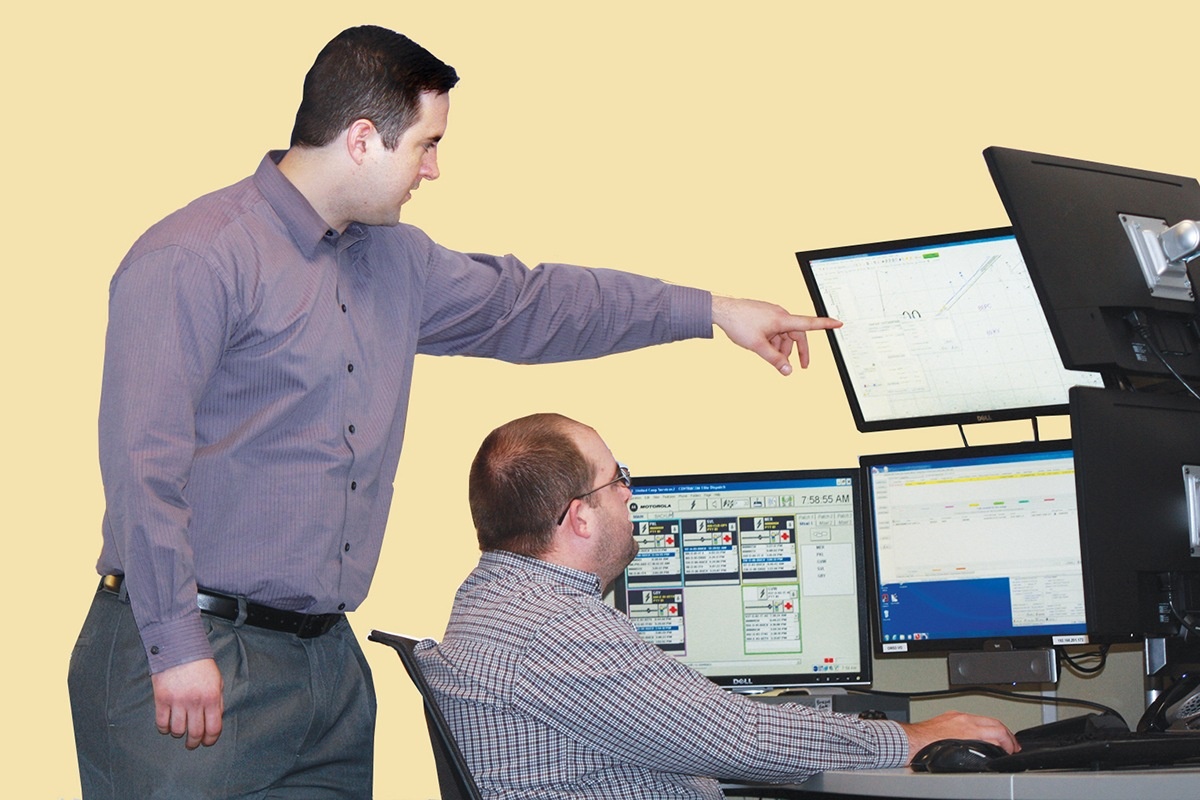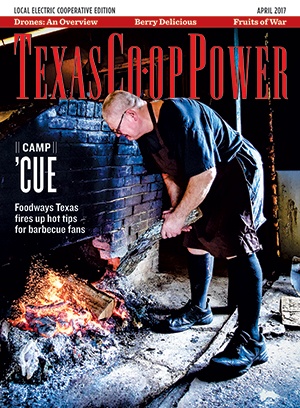In earlier times, they drove their trucks as far down the line as a road would permit. After that, their only recourse was to start wearing out some more shoe leather, climbing over fences, crossing creeks, cutting makeshift paths through underbrush and tree stands—walking out the length of a seemingly endless circuit to find the source of a power outage.
Back then, even as it sometimes is nowadays, finding the reason for a power fault often took more time than it did to repair one.
United linemen and line crews occasionally still have to scramble cross-country today to find and repair high-voltage power line connections, but the cooperative’s proficiency in both detecting faults and predicting their probable location across the more than 10,000 miles of service distribution line United maintains has greatly excelled.
The cooperative’s technological advances in fault detection have been a key component in maximizing service reliability, and that is important when responding to myriad outage causes, most of which are out of United’s control. Varying degrees of weather-related events, trees, collisions, mechanical/equipment failure, as well as other factors annually contribute to the scope of power losses across United’s service territory. Since 2012, for example, the co-op has responded to an average of more than 2,000 outages per year, and most of them have been attributed to weather and vegetation.
Coupled with computer and software systems like United’s outage management system (OMS), supervisory control and data acquisition (SCADA) and advanced metering infrastructure that enable the co-op to efficiently track outages and reduce outage downtimes, United’s new fault detection technology arms co-op dispatch teams with an additional diagnostic tool.
At the core of a modern outage management system like United’s is a detailed network model of the co-op’s entire distribution system. The model is specific to GPS coordinates that are assigned to poles, transformers, and other mechanical and material features throughout United’s service territory. The location of outage calls from members is integrated with system modeling to predict more specific outage locations.
Collectively, the different systems can, as noted earlier, predict which transformer, fuse or breaker opened upon failure, and whether a fault might be downstream or upstream of the device. But as good as these processes are, the systems can’t identify the cause or exactly where the problem is—only that a line opened at one of those points. Yet even with those limitations, the applications still work in tandem to help United prioritize restoration efforts with consideration for affected emergency facilities, the size of outages and the number of members impacted.
Michael Lattner, United electrical engineer, P.E., first began to test the accuracy of the new fault location system in 2009. Following that success, the advanced diagnostic tool was fully deployed in 2011 as another valuable dispatch center resource.
Lattner said that while the collaborative systems are not perfect, they have saved a great amount of hide-and-seek time for United’s dispatch center and operations employees.
As a case in point, the program had earlier that day alerted dispatchers of a momentary blink caused at the site of a lightning arrester.
“That fault prediction was accurate to within the same span of line the arrester was located on,” he said. “Technically, the fault didn’t create an outage, and we were basically able to make the repair without incident. Had we not been able to utilize the program in that instance, our linemen would have had to investigate the cause from span-to-span on a stretch of line that was five miles long.
“There have been plenty of other instances where a fault prediction was given on a circuit that might extend 12 miles or more, and the prediction was precise enough to fall within two to three spans of line,” he said. “On occasions like that, the predictive software cut hours off the search for the problem and sped up the restoration process.”
Lattner said fault detection is just another one of the many tools the cooperative uses to enhance responsiveness to power outages, and predictions are often refined while operations crews are en route to an outage site.
Unless an outage is caused by a high-impedance fault (more often than not due to line contact from a tree or vegetation), Lattner said fault predictions are becoming more accurate all the time.
“We already have SCADA automation in our devices because we need to know when they open and break a circuit. So, the additional software we now employ to make fault predictions is huge. The benefit—cost ratio is huge. For something that utilizes tools that we already have in place, the time-saving advantages are amazing,” he said. So, the benefit to cost ratio for the advanced software we now employ to make fault predictions is huge, and the time-saving advantages are amazing,” he said.
“Another asset we are beginning to deploy are low-cost fault indicators that are attached to power lines and that connect with our SCADA system via cellular communication technology,” Lattner added. “These devices will further our capability for identifying and isolating the location of the fault, whether up or down line from the transmitters.”
But despite his overwhelming confidence that all those measures do enhance United’s system reliability and the cooperative’s responsiveness to outages, Lattner alluded to an assessment held by most industry professionals—that finding a dependable, acceptable and lasting method for keeping trees out of power lines along utility rights-of-ways would be a game-changer for any electric service provider and the consumers it serves.
His candid appraisal was timely enough because, as is the case with many other facets of the cooperative’s operations, United is working now to develop a more efficient, more sustainable, method for that essential maintenance process, too.


